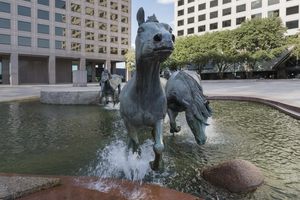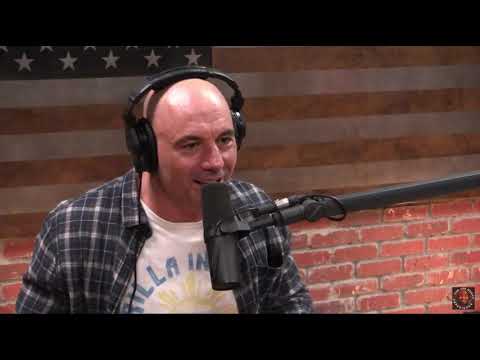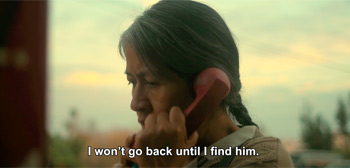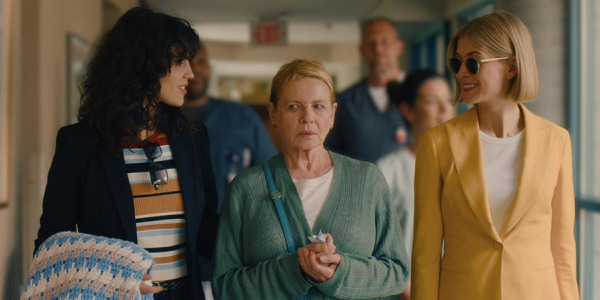Revisiting the Monsters of Maple Street
This essay is part of our series Episodes, a bi-weekly column in which senior contributor Valerie Ettenhofer digs into the singular chapters of television that make the medium great.
From 1959 to 1964, Rod Serling’s The Twilight Zone was the boldest, smartest vision of America — what it has been, what it is, and what it someday could be — for better or worse. The series regularly addresses the realities of a post-war nation on the precipice of major change, tackling everything from mental illness to the lure of capitalism to the double-edged sword of technological advancement. It’s a dose of socially conscious medicine sweetened by an imaginative, surprising sci-fi exterior.
In Serling’s dimension, would-be stock characters become the indelible storytellers through which we better understand our world: salesmen, drunkards, military men, cowboys, nervous women, and innocent children abound. Oh, and aliens. Aliens are everywhere in Serling’s America. The aliens in the series-best episode “The Monsters Are Due on Maple Street” are memorable, but as with all the best trips to the Twilight Zone, it’s the humans who make the story.
It begins in an ordinary tree-lined suburban neighborhood. ”Maple Street, USA,” as Serling calls the location in the narration, appears to be squarely all-American. Kids play baseball. An ice cream man sells sweet treats. Friendly neighbors water lawns and tend to shiny new automobiles. The tranquility doesn’t last; in a flash, all the electronics on the block just stop. A group of concerned citizens quickly assemble, checking their radios, stoves, phones, and cars and confirming that they’ve all quit working. There’s a crisis brewing, but the folks of Maple Street meet it with friendly conjecture and a united front. At first.
Two men consider checking one street over to see if anyone else in the neighborhood is dealing with the same problem, but as they turn to leave, a boy in the crowd speaks up. “You better not,” he says ominously. “They don’t want you to.” It’s a creepy thing to say, and the statement establishes a sense of pervasive dread that’s in sharp contrast to the brightly-lit atmosphere of Maple Street. Under questioning, the boy admits that the “they” in question are aliens he’s read about in science fiction books. In all the novels, he says, the aliens who did this wouldn’t want to let us go.
There must be a more logical explanation, a no-nonsense man named Steve (played by character actor Claude Akins) suggests. He seems like a trustworthy authority, but the seed of suspicion has already been planted in the minds of his neighbors. The flash across the sky was a meteor, he insists, not a spaceship crashing. No, the boy counters, in the book there are threatening outsiders hidden among us, posing as a normal American family. One of these voices is reassuring and rooted in reason. Another, with no grasp of the snowball effect his words might have, presents a complete fallacy. It’s a lesson in logic, and as is too often the case, many people fail it.

From here, Maple Street’s social collapse is swift and shocking, like a kettle screeching to a boil. Once they’ve bought the senseless premise of the alien invader novel, the panicked people of Maple Street, an idyllic middle-class community that appears to be threatened, race past logic into something more primal and dangerous. One man is accused of being an alien because he has been seen looking up at the sky at night, while neighbors posit that another man works on a project in his basement suspiciously often. Though they toss dagger-sharp accusations out without a second thought, the conjecture is led along by a few factual indicators that something really is amiss on Maple Street. Some peoples’ cars turn on with no drivers; others’ empty house lights flicker. These signs of success — a home, a car — become a black mark against each person in the eyes of their neighbors. And as day fades to night, the mood becomes one of feral anxiety.
Steve is the only voice of reason. When the group turns on him, he tells them that unfounded accusations are more dangerous than the possibly-imagined space invaders. “You’re starting something here that, that’s what you should be frightened of,” he says during an impassioned speech. “As God is my witness, you’re letting something begin here that’s a nightmare!”
When the half-hour episode first aired in 1960, Maple Street’s collapse into paranoia was clearly meant to parallel the social strain and fear-mongering of the Cold War, during which Americans were on high alert for Communist agents whom they were told could disrupt the fabric of their communities by posing as normal Americans. This era brought newfound economic stability for some, symbolized by the suburbs and all their material trappings, so the perceived threat of political enemies and spies in their midst, bolstered by propaganda, put Americans who had something to lose for the first time on high alert.
Parables are supposed to be timeless, but I don’t think Serling could have ever guessed just how relevant “The Monsters Are Due On Maple Street” would be over a half-century later. In the 21st century, the slipperiness of logical justification could be applied to everything from the United States’ treatment of immigrants to its official response to COVID-19. Spin the dial on a time machine, and it could as easily apply to the wartime internment of Japanese-Americans, or to the Salem Witch Trials. Sixty years ago, Serling packaged and delivered an incredibly strong warning that fear — which his end voiceover says can both keep us vigilant and tear us apart — is an unstable foundation on which to build a unified response.
“The Monsters Are Due On Maple Street” would’ve been an all-time great episode of television even if it ended on Claude Akin’s memorable defense of reason, and indeed, plenty of The Twilight Zone chapters have communicated much less in their run-time. Instead, it keeps going, building into a masterpiece of multi-layered allegory, as well as a fantastically made half-hour of terror and suspense.
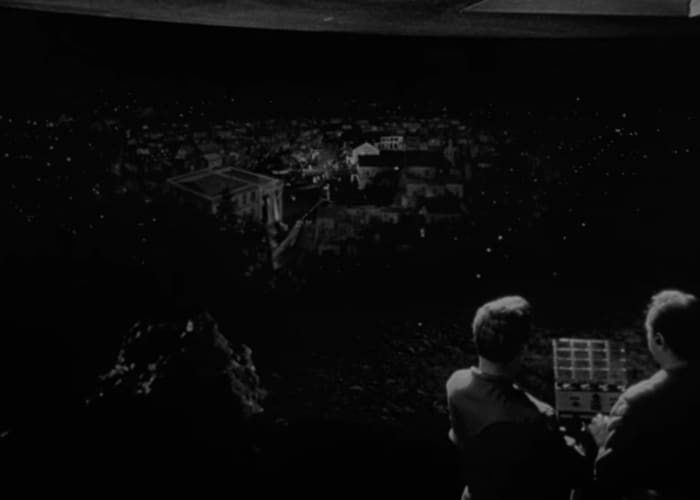
When the group sees a dark figure in the night, one man — the especially confrontational, Hawaiian-shirted Charlie (Jack Weston) — shoots blindly at it. Nevermind that it turns out to be an innocent neighbor whom Charlie kills. “He came out of the darkness,” Charlie reasons. “How was I supposed to know who he was? How was I supposed to know he wasn’t a monster or something? I was only trying to protect my home.” This, too, is a moment that transcends time, a sickeningly familiar defense for anyone watching in the 21st century. It echoes, at some points almost word-for-word, the statements made by Americans who have shot and killed unarmed strangers, usually men of color, in recent years. Rod Serling’s crystal ball has rarely been more accurate, nor more painfully realized.
Unusually relentless compared to the rest of the steadily paced series, the “The Monsters Are Due on Maple Street” continues to descend into chaos, even after the somber gut-punch of an interlude caused by the neighbor’s murder. The group’s mounting paranoia, coupled with a tragedy that’s impossible to make sense of, becomes too much to bear; the formerly upstanding citizens of Maple Street start throwing bricks and screaming near-senseless allegations against one another. Dutch angles, extreme close-ups, and jarring sounds let viewers experience the frenzy firsthand: episode director Ronald Winston adds loads of cinematic flair to a series that often shoots straight in a visual sense.
The escalation is overwhelming and powerful, and just when the hysteria starts to seem unbearable, our focus pulls back to two figures who observe the neighborhood from a distance. At first, we only see these men’s’ backs, but it’s clear from their conversation that they’re the aliens in question. They don’t look like anyone on Maple Street. The two are doing an experiment, they explain, one that simply involves a few electrical tricks and no body-snatchers at all. They’ve run it before, in different areas, and come up with the same results each time.
This is perhaps the most pivotal and complicated piece of the Maple Street story, the toughest lesson to unpack; the twist ending reveals an illusion of control, a sense that our interests and choices are driven by unseen figures who are much more powerful than we could ever be. The spacemen who appear in the episode’s final moments are puppeteers of sorts, sewing conflict while their own intrusion goes unrecognized. We have a tendency to simplify Serling’s stories into lessons on human nature, but in this case, he ends his allegory by drawing our attention to the men behind the curtain.
“This pattern’s always the same,” one alien says as the two look on, and the other summarizes their findings in emotionless monotone: “They pick the most dangerous enemy they can find, and it’s themselves.” They get on their spaceship and leave Maple Street to ruins.

